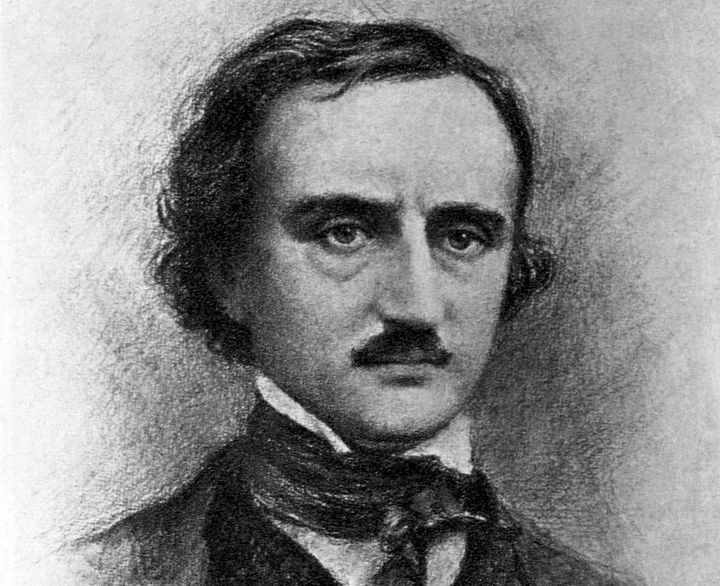copyright 2008 by Gary L. Pullman
Little Red Riding Hood: “Grandma! What big teeth you have!”
Wolf: “The better to eat you with, my dear!”
Herbert Spencer, not Charles Darwin, originated the phrase “the survival of the fittest,” making evolution a sort of game in which the winner is the organism or the species of organisms (depending upon one’s view concerning whether the ultimate survivor will be an individual or a species) that eliminates all competitors. The poet Alfred Lord Tennyson coined the phrase “nature red in tooth and claw.” From Spencer’s point of view (and Tennyson’s), it’s a jungle out there. It’s a wonder that it wasn’t one of them, rather than Harry Harrison, who wrote the sci fi Deathworld trilogy, in which a planet’s wildlife develops with no other purpose than to kill or to be killed. Spencer’s (and Tennyson’s) view of evolution is a convenient basis for horror (and science fiction) stories, regardless of whether, from scientific and philosophical points of view, it’s true. However, the views of another early evolutionist are, perhaps, even more useful to horror and science fiction writers.

The puma: scary!
For most scientists, evolution is a case of function follows form. In other words, we have ears; therefore, we hear. By the way, their theory answers, once and for all, it would seem, the philosophical koan which asks whether a tree, falling in a forest in which no one is present, makes a sound. No. (There are no ears to hear.)
But what if Aristotle, Pierre Teilhard de Chardin, and Jean-Baptiste Lemarck are right? What if evolution is really a case of form following function and we developed ears purposely so that we could hear? In a word, what if evolution is teleological rather than accidental?
Lemarck, once very popular among his peers, has since, like Lucifer, fallen from favor among the host of Darwinian evolutionists and has been cast into their version of hell (extinction). However, his views are interesting and pertinent to horror writers who are always searching for relatively plausible (all right, not absolutely unbelievable) ways to explain the monsters with which they populate the pages and film footage of their stories. And they seem, in some quarters, poised to return. Therefore, in the interests of the theory and practice of horror fiction, we’ll explore Lemarck’s theory--in summary fashion, of course. Then, we’ll consider a few possible applications of his theory to horror and science fiction.
He believed, and taught others to believe (but with possibly little lasting effect) that an organism can pass acquired characteristics on to their offspring. The characteristics thus transmitted from parent to offspring are necessary or helpful in promoting the species’ (and the individuals’) survival. The classic example of his theory is the giraffe’s neck. Needing to graze the leaves of trees, the animal continually stretched its neck until, eventually, the neck elongated and was genetically transmitted to its offspring.
Two principles govern Lemarckian thought: use it or lose it (unused characteristics are tossed while useful ones are acquired and retained) and family heirlooms, in the form of ancestors’ traits, are passed down through the generations. His view explains not only giraffes, followers claim, but athletes and thinkers and beautiful people, among others, for athletes have the physical prowess their athletic ancestors developed, thinkers the well-developed brains of their forebears, and beautiful people the aesthetically pleasing features their near and distant relatives share (or shared) with them. It’s not so good, perhaps, in explaining the continued existence of ninety-eight-pound weaklings, idiots, and the physically repugnant except to say that they are on their way out; their days are numbered. However, a little innovative thinking can, perhaps, discover a need for such otherwise undesirable traits and, thereby, save them from the damnation of eternal extinction.
According to later proponents of Lemarck’s views, unused organs and other structures likewise perish over time, becoming weaker and weaker until, eventually, they vanish. One might cite the appendix and the coccyx, or tailbone, as examples of vanishing organs, and some would include, among other body parts, the little fingers and toes. The surviving characteristics are then passed on to the kids. Environmental changes introduce new needs, and, as a result, the organism’s behavior changes, leading to the eventual acquisition of altered organs and characteristics which are then passed on to junior.

Tyranosaur: scarier!
Harvard University’s William McDougall and Ivan Pavlov were both Lemarckian scientists. On the bases of their research, they believed that acquired characteristics--rats’ learned ability to navigate mazes and similar skills--were passed on to the offspring of the animals that originally acquired them. Other scientists, including Ted Steele, Eva Jablonka and Marion J. Lamb, and John Cairns, have also observed behaviors at the cellular and microscopic levels that they attribute to a Lemarckian sort of genetics.
What are the implications of Lemarkian evolution theory for horror (and sci fi) writers? We can think of a few, and you can probably think of a slew.
Serial killers shouldn’t have children, for one thing, because the facility for killing other people that they’ve acquired from long and frequent practice is an acquired trait that they could pass on to their children. We don’t need a Ted Bundy, Jr. or a little John Wayne Gacy. One was plenty.
Ugliness might be helpful in some situations. It may not be handy in getting a date on Saturday night, but it could be useful in frightening away potential threats, which is why we wear Halloween masks and costumes and why mothers-in-law and other animals exhibit what scientists call “threat displays,” erecting their hair, expanding their muscles and chests, opening their mouths, and rearing onto their hind legs. The ugliest among us might still be with us because their ugliness is useful to their survival and to that of their children. Maybe they can’t compete in other ways, through intelligence, good looks, or by being a sycophant. They use their ugliness, so they don’t lose it. If so, might that not explain monsters? Few creatures are uglier than a gorgon, the extraterrestrials of Predator and Alien, or the monsters in H. P. Lovecraft’s fiction.
We should be careful concerning what we’re doing to our environment, because, if we change it enough or in the wrong way, the planet could become a breeding ground for new and improved, but not necessarily pleasant, behaviors which, in turn, could result in the development of dreadful organs and characteristics that are passed from mommy and daddy mutant to baby mutant. In such a modified environment, a nocturnal individual or group of individuals, finding daytime activity risky or just not worth the effort, might enter a catatonic state until nightfall and, faced with the need to acquire blood quickly and readily as a source of nutrients, it might develop fangs and come out at dark to suck the blood of Paris Hilton and other late-night partygoers. Viola! Thanks to Lemarckian evolutionary theory, vampires would no longer be merely fictitious beings (except, perhaps, for the undead and immortality issues).
Since advertising is based upon supplying needs, real or perceived, we might wonder what generations of commercials concerning perfume, beer, fashion, and the like are making of us and our children and who, besides business leaders, might be behind such campaigns and why. Are ads changing our cognitive environment? Are they identifying or creating needs that are not only lucrative, but also antisocial and harmful to society in general?
There’s a wealth of conspiracy theory-driven fiction here, it seems, with an array of possible culprits and motives. In a world in which form and function both follow need, anything is possible, especially if we include perceived as well as actual needs, and nature, already red in tooth and claw, might become red in maw as well.











